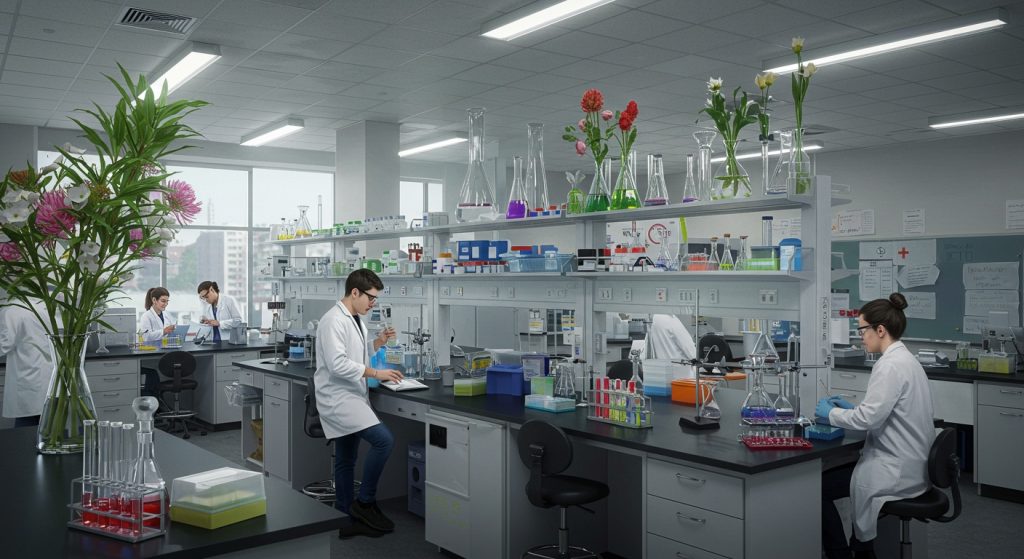The precision of modern genetic engineering, from CRISPR-based gene editing in agriculture to sophisticated gene drives targeting pest populations, promises revolutionary solutions to global challenges. But, the environmental impact of genetic engineering extends far beyond intended benefits, presenting a complex frontier of ecological risk. Introducing novel genetic constructs into dynamic natural systems can trigger unforeseen consequences, such as off-target effects on non-target species, the disruption of intricate food webs, or the potential for horizontal gene transfer to wild relatives. As modified organisms become more prevalent, understanding these cascading, often irreversible, environmental consequences becomes paramount for safeguarding biodiversity and maintaining ecological stability.

Understanding Genetic Engineering: The Basics
Genetic engineering, often referred to as gene editing, is a powerful set of biotechnologies that allows scientists to directly manipulate an organism’s genes. Think of it like editing a blueprint for life. Instead of traditional breeding methods, which involve selecting traits over many generations, genetic engineering enables precise changes to be made at the molecular level. At its core, it involves adding, deleting, or modifying specific DNA sequences within an organism’s genome.
One of the most revolutionary tools in this field is
CRISPR-Cas9 . CRISPR (Clustered Regularly Interspaced Short Palindromic Repeats) acts like a molecular scissor, guided by a synthetic RNA molecule to a specific location in the DNA, where the Cas9 enzyme then makes a precise cut. This allows scientists to remove, replace, or insert new genetic material with unprecedented accuracy. Other methods include TALENs (Transcription Activator-Like Effector Nucleases) and ZFNs (Zinc Finger Nucleases), which also target specific DNA sequences for modification.
While genetic engineering holds immense promise for various fields, from developing new medicines and therapies to creating more resilient crops, our focus here is on its potential consequences for the natural world. The goal is to grasp the Environmental impact of genetic engineering, particularly the unforeseen ecological ripple effects that could arise from altering the fundamental building blocks of life.
The Promise vs. The Peril: Why Environmental Concerns Arise
The allure of genetic engineering is undeniable. In agriculture, it promises crops resistant to pests, diseases. harsh environmental conditions like drought or salinity, potentially increasing food security for a growing global population. Imagine a rice plant that produces its own vitamin A, combating malnutrition, or a potato that resists late blight, reducing the need for chemical fungicides. In medicine, it offers hope for curing genetic diseases and developing innovative treatments.
But, alongside these exciting possibilities, there’s a critical need to scrutinize the potential downsides, especially regarding our ecosystems. When we introduce genetically modified organisms (GMOs) into complex natural environments, we are essentially conducting large-scale experiments with variables that are difficult to predict or control. The concern isn’t just about the modified organism itself. how it interacts with the intricate web of life around it. The very precision of genetic engineering can sometimes lead to unforeseen systemic effects, making the Environmental impact of genetic engineering a subject of intense scientific and public debate.
Key Environmental Risks of Genetic Engineering
Understanding the potential downsides requires looking at several interconnected aspects of ecosystem health and biodiversity. Here are some of the primary environmental risks identified by researchers and ecologists:
Gene Flow and “Superweeds”/”Superpests”
One of the most frequently cited concerns is “gene flow,” the transfer of genetic material from a genetically engineered organism to a non-GE organism, often through pollen or seed dispersal. For example, if herbicide-tolerant genes from a GE crop like Roundup Ready corn transfer to a wild relative, it could create “superweeds” that are also resistant to common herbicides. This has already been observed with herbicide-resistant Palmer amaranth in the U. S. , which acquired resistance genes through cross-pollination from GE crops, leading to increased herbicide use and significant challenges for farmers.
- Superweeds
- Superpests
When GE crops designed to tolerate herbicides cross-pollinate with wild relatives, they can create new weed varieties that inherit the herbicide resistance. This necessitates the use of stronger or different herbicides, or more intensive manual weeding, potentially increasing environmental pollution and farming costs.
Similarly, crops engineered to produce their own insecticides (like Bt corn, which produces a protein toxic to certain insect pests) can exert strong selection pressure on insect populations. Over time, pests may evolve resistance to the GE toxin, leading to the emergence of “superpests” that are no longer controlled by the engineered trait, rendering the technology ineffective and potentially requiring greater reliance on conventional pesticides.
Impact on Non-Target Organisms
Genetically engineered crops, while designed to target specific pests, can inadvertently harm non-target organisms that are beneficial or essential to the ecosystem. A well-known example involved the potential harm to monarch butterflies from Bt corn pollen. Early studies raised concerns that pollen from Bt corn, which contains an insecticide, could drift onto milkweed plants (the sole food source for monarch caterpillars) and negatively affect their survival. While subsequent research offered a more nuanced picture, it highlighted the critical need for comprehensive environmental risk assessments before widespread deployment.
- Beneficial Insects
- Soil Microorganisms
- Wildlife
Pollinators like bees and other beneficial insects that help control pests might be exposed to toxins or altered plant compounds from GE crops, impacting their health and populations.
The root exudates of GE plants or the breakdown of their residues in the soil could potentially alter the composition and function of soil microbial communities, which are vital for nutrient cycling and soil health.
Birds, small mammals. other wildlife that consume GE plants or insects feeding on them could be indirectly affected in ways not yet fully understood.
Loss of Biodiversity and Genetic Monoculture
The widespread adoption of a few successful GE crop varieties can lead to a narrowing of the genetic diversity in agricultural landscapes. When farmers increasingly rely on a handful of genetically uniform varieties, it makes entire regions more vulnerable to new diseases or pest outbreaks. If a new pathogen emerges that can overcome the resistance engineered into a widely planted GE crop, the consequences for food supply could be catastrophic, as there would be little genetic variation to fall back on.
- Erosion of Traditional Varieties
- Increased Vulnerability
The economic pressures to adopt high-yielding GE varieties can displace traditional, locally adapted crop varieties, leading to a loss of valuable genetic resources that might hold resistance to future threats or thrive in specific local conditions.
A lack of genetic diversity in crops is akin to putting all our eggs in one basket. History has shown us the dangers of monoculture, such as the Irish Potato Famine, which was exacerbated by a lack of genetic diversity in potato crops.
Ecological Disruptions and Ecosystem Imbalance
Introducing organisms with novel traits into an ecosystem can have cascading effects that disrupt natural balances. For instance, genetically engineered trees designed for faster growth or altered lignin content could impact forest ecosystems in unforeseen ways, affecting soil chemistry, water cycles, or the food sources available to wildlife. If GE fish with enhanced growth rates escape into wild populations, they could outcompete native species for food and mates, or even alter the genetic makeup of wild populations, potentially leading to a decline in natural biodiversity.
- Altered Nutrient Cycles
- Food Web Impacts
- Competition with Wild Relatives
Changes in plant metabolism or decomposition rates due to genetic modification could affect the cycling of nutrients like nitrogen and phosphorus in the soil.
Alterations in the palatability or nutritional content of GE organisms could affect predator-prey dynamics or the broader food web, impacting species higher up the chain.
If GE organisms have a competitive advantage (e. g. , enhanced stress tolerance), they could outcompete wild relatives, reducing their populations and potentially leading to local extinctions.
Real-World Examples and Case Studies
Examining specific instances helps illustrate the complexities and challenges associated with the Environmental impact of genetic engineering:
- Bt Cotton in India
- Herbicide-Tolerant Crops and Superweeds in the U. S.
- Genetically Engineered Salmon (AquaBounty Technologies’ AquAdvantage Salmon)
While Bt cotton initially brought significant benefits to farmers by reducing pesticide use against bollworms, its long-term impact has been mixed. In some regions, secondary pests (those not targeted by the Bt toxin) have emerged as major problems. resistance to the Bt toxin has developed in bollworm populations in certain areas, necessitating additional pest control measures. This highlights the dynamic nature of ecosystems and the adaptive capacity of pests.
The widespread adoption of glyphosate-tolerant (Roundup Ready) crops led to an initial reduction in tilling and herbicide use. But, the continuous reliance on a single herbicide led to the rapid evolution of glyphosate-resistant weeds, such as Palmer amaranth and common ragweed, across millions of acres. This has forced farmers to resort to more diverse herbicide cocktails, older, more toxic herbicides, or more intensive mechanical weeding, increasing costs and environmental burden.
Approved for human consumption in the U. S. and Canada, this salmon is engineered to grow faster than conventional Atlantic salmon. While currently raised in contained land-based facilities to prevent escape, environmental groups and some scientists express concerns about the potential ecological disruption if these fish were to escape into wild salmon populations. They could outcompete wild salmon for food, alter breeding patterns. potentially reduce the fitness of wild populations, posing a significant risk to an already vulnerable species.
Mitigation Strategies and Responsible Innovation
Addressing the potential Environmental impact of genetic engineering requires a multi-faceted approach centered on responsible innovation and strong regulatory oversight. It’s not about stopping progress. ensuring it’s conducted safely and sustainably.
- Strict Regulatory Frameworks
- Containment Measures
- Long-Term Monitoring
- Diverse Farming Practices
- Precautionary Principle
Robust, science-based regulatory systems are crucial for assessing the risks of GE organisms before their release. This includes mandatory environmental risk assessments, long-term monitoring plans. post-market surveillance to detect unforeseen effects.
For some applications, particularly those with high environmental risk (like GE fish or trees), effective biological or physical containment strategies are essential to prevent their escape and establishment in natural environments. This might involve sterile varieties or growing them in closed systems.
The ecological effects of GE organisms can be subtle and take years to manifest. Long-term, independent monitoring of ecosystems where GE crops are grown is vital to detect any negative impacts on biodiversity, soil health, or non-target organisms.
Promoting agricultural practices that incorporate crop rotation, integrated pest management (IPM). the cultivation of diverse crop varieties alongside GE crops can help mitigate the risks of resistance development and maintain ecosystem resilience.
In cases where scientific uncertainty exists regarding potential severe or irreversible environmental harm, the precautionary principle suggests that action should be taken to prevent harm, even if full scientific certainty is not yet established. This calls for a cautious approach to the release of novel GE organisms.
The Path Forward: Balancing Innovation and Precaution
The conversation around the Environmental impact of genetic engineering is complex and constantly evolving. It requires a delicate balance between harnessing the immense potential of genetic technologies for societal benefit and exercising extreme caution to protect our planet’s delicate ecosystems. As we advance in our ability to manipulate life at its most fundamental level, our responsibility to grasp and mitigate the unforeseen consequences grows exponentially.
Moving forward, it is essential to foster:
- Rigorous and Independent Research
- Transparent Data Sharing
- Global Collaboration
- Public Engagement and Education
Continued investment in independent research on the long-term ecological impacts of GE organisms, conducted by diverse scientific bodies, is paramount.
Open access to research data and transparent decision-making processes can build public trust and facilitate informed discussions.
Environmental impacts often transcend national borders. International cooperation in research, regulation. monitoring is crucial for addressing the global ecological implications of genetic engineering.
Educating the public about the science, risks. benefits of genetic engineering allows for more informed societal choices and reduces misinformation.
Ultimately, the goal is to ensure that while we innovate for a better future, we do so in a way that safeguards the natural world for generations to come. The power of genetic engineering is immense. with that power comes a profound responsibility to comprehend its full ecological footprint before we reshape our world.
Conclusion
Understanding the potential environmental risks of genetic engineering is not about halting progress. about steering it responsibly. As we witness advancements like CRISPR gene drives in pest control, the unintended consequences on non-target species or ecosystem balance remain a critical concern, highlighting the need for robust risk assessments and transparent dialogue. My personal tip is to always approach these topics with a healthy skepticism, questioning not just the immediate benefits but also the long-term ecological ripple effects. For example, while GM crops offer enhanced yields, their impact on biodiversity, like the potential for superweeds, warrants continuous vigilance and adaptive strategies. Ultimately, our collective responsibility is to advocate for rigorous ethical frameworks and comprehensive ecological studies before widespread implementation. This isn’t merely academic; it’s about safeguarding our planet’s intricate web of life. We must support research that prioritizes environmental stewardship, fostering innovations that genuinely contribute to a sustainable future, rather than inadvertently creating new challenges. Let’s champion a future where scientific ingenuity walks hand-in-hand with ecological wisdom. Learn more about the potential benefits of this technology at Genetic Engineering’s Green Promise.
More Articles
Genetic Engineering’s Green Promise: How It Benefits Our Environment
Smart Strategies for Finding Promising Biotechnology Stocks to Invest In
Propelling Innovation: Discovering Germany’s Leading Engineering Universities for 2025
Designing Your Future: Exploring Premier Architecture Universities Across the UK
FAQs
So, what’s the big deal with genetically engineered organisms (GEOs) getting out into the environment?
The primary concern is unintended consequences. For instance, engineered genes could spread to wild relatives of crops (gene flow), creating ‘superweeds’ resistant to herbicides or ‘superpests’ resistant to pesticides. This can disrupt natural ecosystems and reduce biodiversity.
Can these engineered plants or animals accidentally harm other species?
Absolutely. There’s a risk of what we call ‘non-target effects.’ For example, plants engineered to produce pesticides might inadvertently harm beneficial insects, soil microbes, or even animals higher up the food chain that consume them, disrupting delicate ecological balances.
Are there long-term environmental risks we might not be seeing right now?
That’s a huge unknown. Ecosystems are incredibly complex. introducing genetically engineered organisms can have ripple effects that only become apparent over decades. This could include subtle changes in soil health, shifts in pest populations, or impacts on beneficial pollinators, leading to unforeseen ecological disruptions.
Could using genetically engineered crops actually make us use more chemicals, not less?
Ironically, yes. While some GEOs are designed to reduce pesticide use, others, like herbicide-tolerant crops, have led to the widespread use of specific herbicides, which in turn has caused the rapid evolution of herbicide-resistant ‘superweeds.’ This often forces farmers to use new or stronger chemicals.
What happens if engineered genes spread to wild plants? Is that a big problem?
It’s a significant concern. If, say, a gene for herbicide resistance from a GE crop spreads to a wild relative, that wild plant could become very difficult to control, turning into an invasive weed. This ‘gene flow’ can threaten natural plant diversity and make land management much harder.
How does genetic engineering impact biodiversity?
It can affect biodiversity in a few ways. If GE crops become dominant, they might displace traditional varieties and wild relatives, leading to a loss of genetic diversity in our food supply. Also, the ecological changes they trigger, like harm to non-target species or the rise of superweeds, can reduce overall biodiversity in natural habitats.



